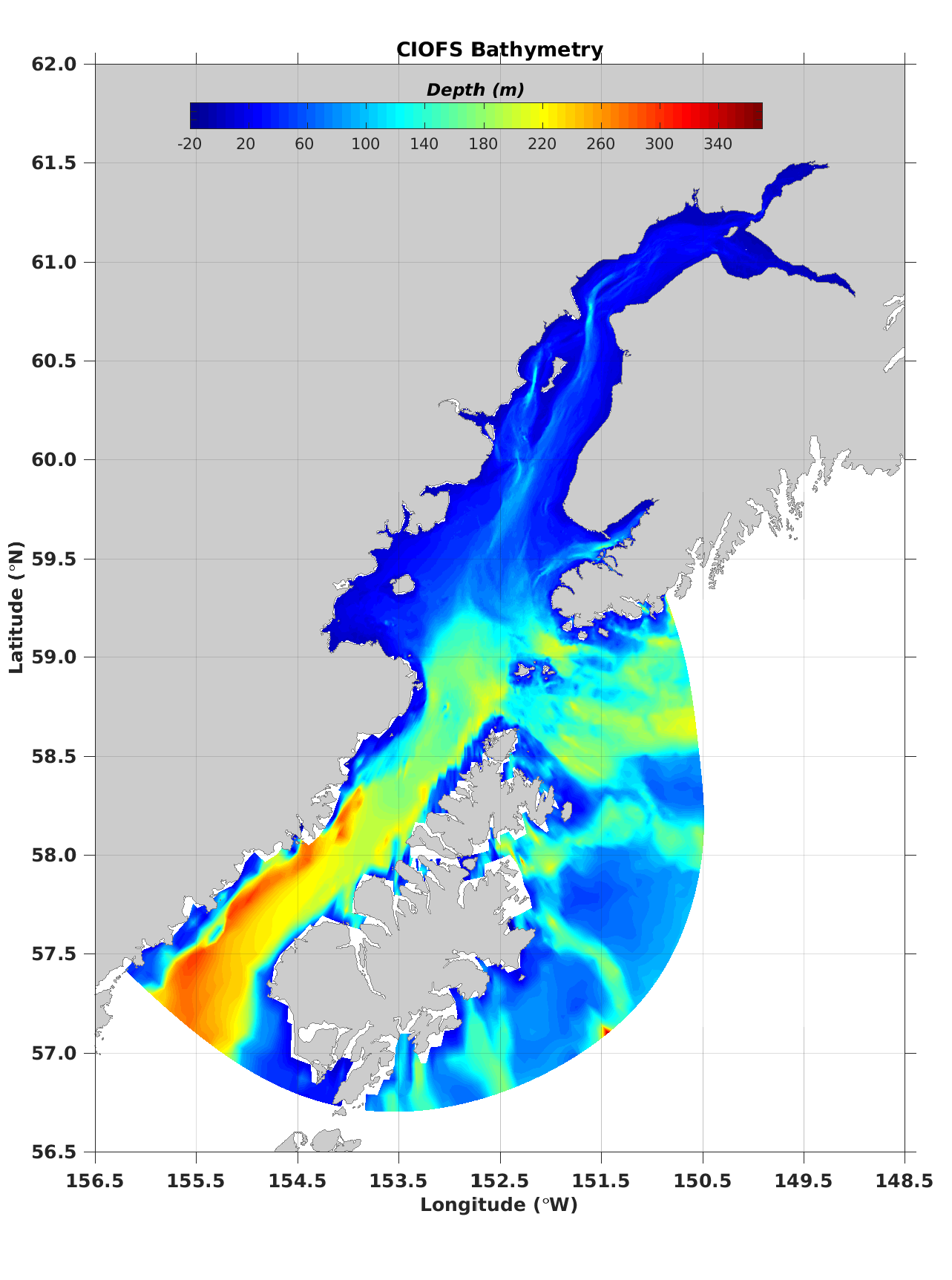The Cook Inlet Operational Forecast System (CIOFS) - Developmental
Oceanographic nowcasts and forecast guidance are scientific predictions about the present and future states of a water body (generally including water levels, currents, water temperature and salinity). These predictions rely on either near real-time observations or forecasts from large-scale numerical models. A nowcast incorporates recent (and often near real-time) observed meteorological, oceanographic, and/or river flow rate data and/or analyzed (e.g. gridded) meteorological and oceanographic products. A nowcast covers the period of time from the recent past (e.g., the past few days) to the present, and it can make predictions for locations where observational data are not available. Forecast guidance incorporates meteorological, oceanographic, and/or river flow rate forecasts and makes predictions about the future states of a water body. A forecast is usually initiated by the state of a nowcast.
CIOFS surface meteorological forcing conditions are based on the National Weather Service (NWS) North American Mesoscale (NAM) weather prediction model (for both nowcast and forecast). The National Centers for Environmental Prediction (NCEP)'s operational meteorological forecast products of Global Forecast System (GFS) are used as a backup while NAM products are not available.
CIOFS uses NCEP's Global Real-Time Ocean Forecast System (G-RTOFS) to produce lateral ocean open boundary conditions of water temperature, salinity and sub-tidal water levels, and Navy's operational global HYCOM is used as a backup of RTOFS while RTOFS is not available. ADCIRC 2001 Tidal Database is used to generate CIOFS tidal open boundary forcing. Additionally, USGS real-time river discharge observations from 12 major river gauges are used to drive the model.
The CIOFS uses orthogonal grid (lower right figure) with horizontal dimension of 1132 x 777. Its horizontal resolution ranges from 10 m within the estuaries and navigational channels to 3.5 km near offshore waters. The vertical grid follows the terrain and consists of 30 sigma levels. The bathymetry of the Cook Inlet is indicated on your left. Model bathymetry is populated from the best available data which include NOS sounding data, NGDC and NGS shoreline data, USGS topography gridded product. Digital Elevation Map (DEM) was used for wetting/drying process.
CIOFS runs on NOAA's High Performance Computer Systems (HPCS), the Weather Climate Operational Supercomputer System (WCOSS) under the NOS shared standard Coastal Ocean Modeling Framework (COMF) developed by CO-OPS. As a result, CIOFS has direct access to NWS operational meteorological products and real-time observations that are required to run CIOFS reliably. CIOFS runs four times (00z, 06z, 12z, and 18z UTC) per day with 6-hour nowcasts and 48-hour forecasts for each cycle.
The CIOFS graphics archive is located at: ftp://tidepool.nos.noaa.gov/pub/outgoing/ofs/ciofs/graphics/
CIOFS output is in NetCDF format. An archive of CIOFS NetCDF nowcast and forecast files can be accessed from CO-OPS OPenDAP and THREDDS servers.
All CO-OPS official real-time products, including nowcast and forecast guidance from CIOFS are monitored by the CO-OPS's Continuous Operational Real-Time Monitoring System (CORMS). CORMS provides 24 hour per day, 7 days per week monitoring and quality control of sensors and data in order to ensure the availability, accuracy, and quality of tide, water level, current, and other marine environmental information. CORMS is intended to identify invalid and erroneous data and information before application of the data by real-time and near real-time users.

